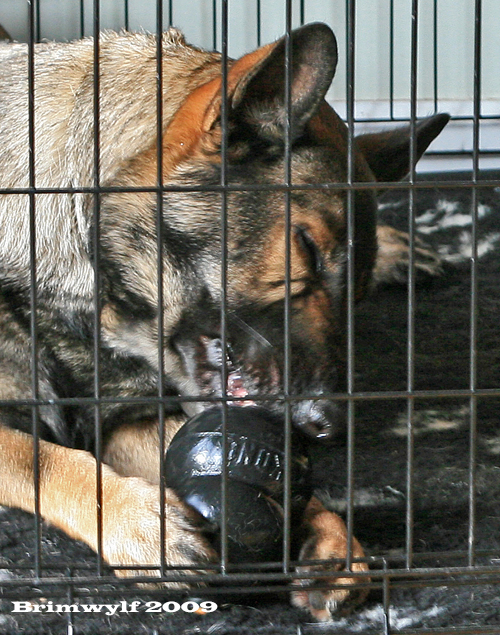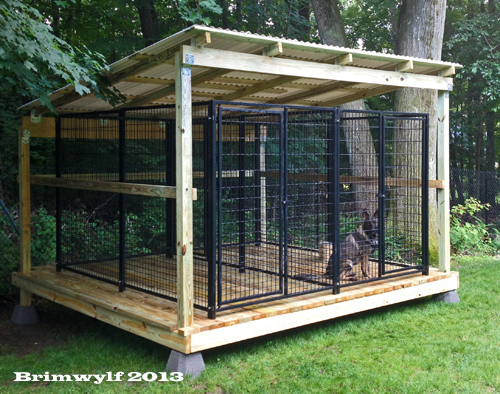Crate and Kennel Training
Most people who own dogs also have to go to work every day. This can be a bit of a challenge with a high drive puppy. It is essential to train the pup to accept periods of time in a crate or kennel. These areas keep the pup safe and contained. First, make sure the crate or kennel is secure, dogs who learn to escape, will continue to try harder, and it will become impossible to keep them contained. They also are at a real danger of hurting themselves trying to get out. If you are training for IPO, you do not want a dog who breaks it's teeth by escaping.
If the pup is being crated while you leave the house, remember that puppies need to go out regularly. A rule of thumb is they can be left for the number of hours equal to their age in months. An 8 week old pup is 2 months old and can be left a maximum of 2 hours before being let out to urinate and defecate. If the only option is a crate, then you will need someone to visit during the day. Ideally when you get a new pup, take some time off to gradually get them used to spending time crated.

Initially, leave the pup with an indestructible toy or raw bone (we have used beef ribs and soup bones). There are several toys that are designed to be stuffed such as Kongs, we use the extreme black Kongs, fill them with some of the dogs daily ration of food and some yogurt and freeze them. This can keep a pup entertained for several hours. Once they are adults, it won't take so long to eat, but with good behaviors set up early in life, the dog has the best chance of remaining calm and quiet all day.
If possible, kennel your pup next to a calm older dog to help encourage calm behaviors. This is also where temperament comes in to play. If you picked a pup with a solid temperament from parents with an off-switch, your job will be much easier than with a nervous highly strung pup.
Take your pup for a short walk or do a little low-key training before putting the pup in the kennel. Make sure the exercise is calm, just a walk on leash, not ball play. Our pups often do a little tracking in the mornings. Do not be excited or talk in a high pitched voice when leaving the pup or taking him out of the kennel, walk slowly and calmly, and wait for the pup to be calm before leaving or opening the door.
Other good behaviors are to encourage the pup to be calm and sitting before being let out of the crate or kennel. Do not let them out or give food to a pup who is making lots of noise. Remember any attention can be rewarding so don't yell at a barking dog either. Some people suggest bark collars but in our experience, these just make the dog more frustrated and more likely to engage in other destructive behaviors. It is very difficult to change behaviors in older dogs who have not been taught to accept being in a crate or kennel.

Kennel construction varies depending on location. For places with snow, a roof is essential. Some people like to build a half inside, half outside run. Having half grass is good for teaching puppies to discriminate, but adult dogs often destroy the grass and try to dig under and it just becomes a mud hole. Concrete is easy to clean but expensive and may be a bit hard on joints. Crushed stone looks attractive but is hard to disinfect and keep clean. The best flooring is probably decking, it allows good ventilation and is not too hard. Kennels should be as big as you can afford.